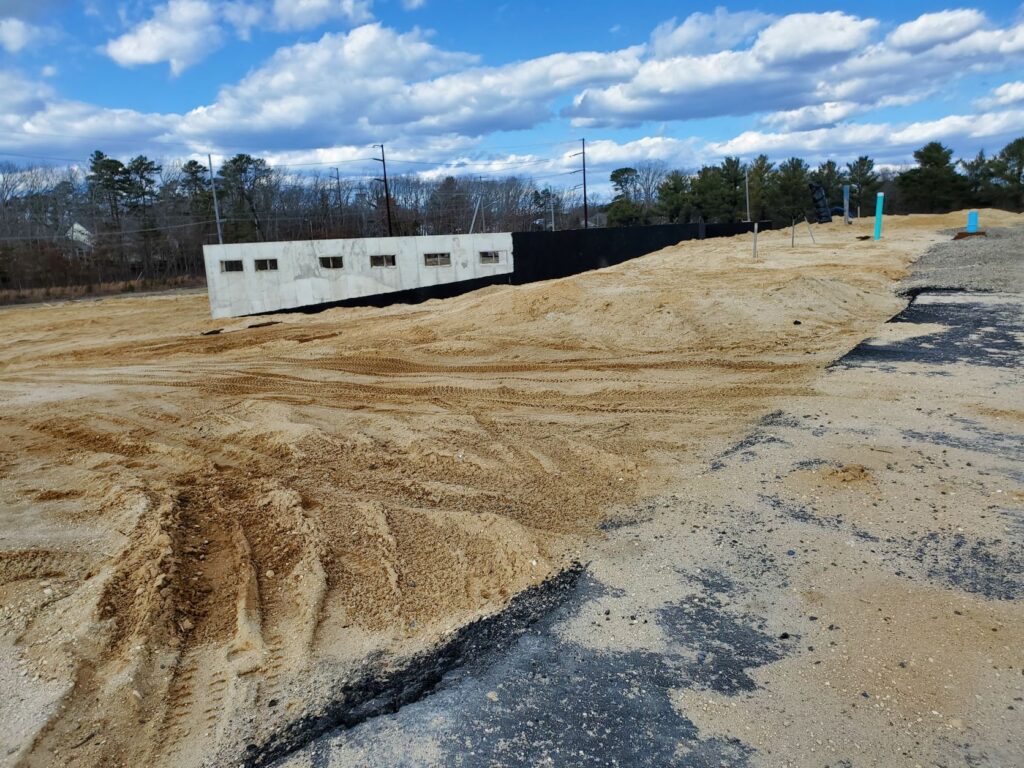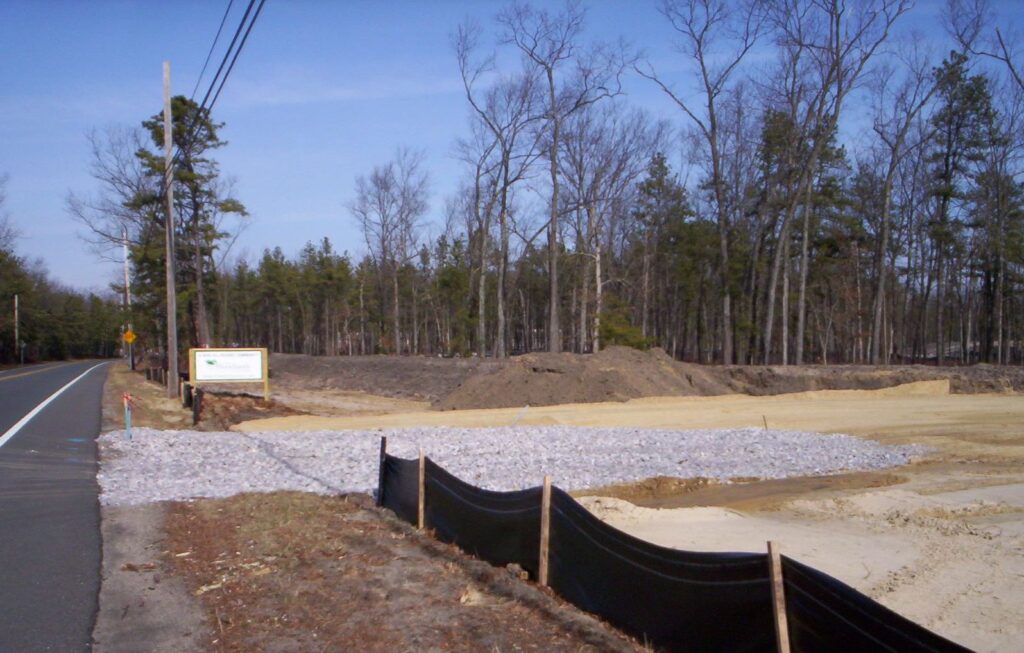Combating Sediment Pollution in Our Waterways
by Jessica Pinto, Erosion Control Specialist

During spring in NJ rain is abundant! This life-giving rain provides needed water to the many awakening plants in our gardens, on our farms and to our natural lands. However, when precipitation falls over the bare soils of an active construction site this may result in sediment tracking, unless the proper controls are in place. As construction vehicles move on and off the job site, soil sticks to the massive truck tires and is easily tracked out onto roadways. Once on the impervious asphalt surface, the soil is easily washed into the local storm sewer infrastructure and in some cases into our surface waters. To combat this threat of nonpoint source pollution to our waterways and minimize the havoc it can wreak on our infrastructure, the District technical staff enforce the Standard for Stabilized Construction Access of the New Jersey Soil Erosion and Sediment Control Standards.
As per the Standard, the purpose of a stabilized construction access is to reduce the tracking or flowing of sediment onto paved roadways. In addition, oils, greases, and diesel fuels can become mixed with sediment during construction and may also migrate into the offsite drainage system where they may enter directly into a waterway. By preventing or minimizing the tracking of sediments onto paved areas, a significant reduction in construction related hydrocarbon pollution is achieved.
Stone used as a stabilized construction access transition shall be clean, crushed, and angular. The stone size shall be a minimum of 1 to 2 ½ inches and laid 6 inches thick. The stone must be no less than the full width of the entrance to the site and shall be a minimum of 50 feet long. For sites with fine grained soils and/or steeper slopes the stone entrance shall be a minimum of 100 feet long. Equally important to proper installation based on the design criteria is maintenance of the stone. The entrance shall be maintained in a condition which will prevent tracking or flowing of sediment onto roadways. This may require periodic top dressing with additional stone or additional length to the entrance as conditions demand.

All sediment spilled, dropped, washed, or tracked onto roadways (public or private) or onto other impervious surfaces must be removed immediately. Where accumulation of dust/sediment is inadequately cleaned or removed by conventional methods, a power broom or street sweeper will be required to clean paved or impervious surfaces. Staff at the Ocean County Soil Conservation District require construction sites with certified plans to install and maintain stabilized construction access while the site is under construction, minimizing the amount of soil leaving the site through tracking and flowing. This effort helps to maintain our environment, natural resources and infrastructure.
